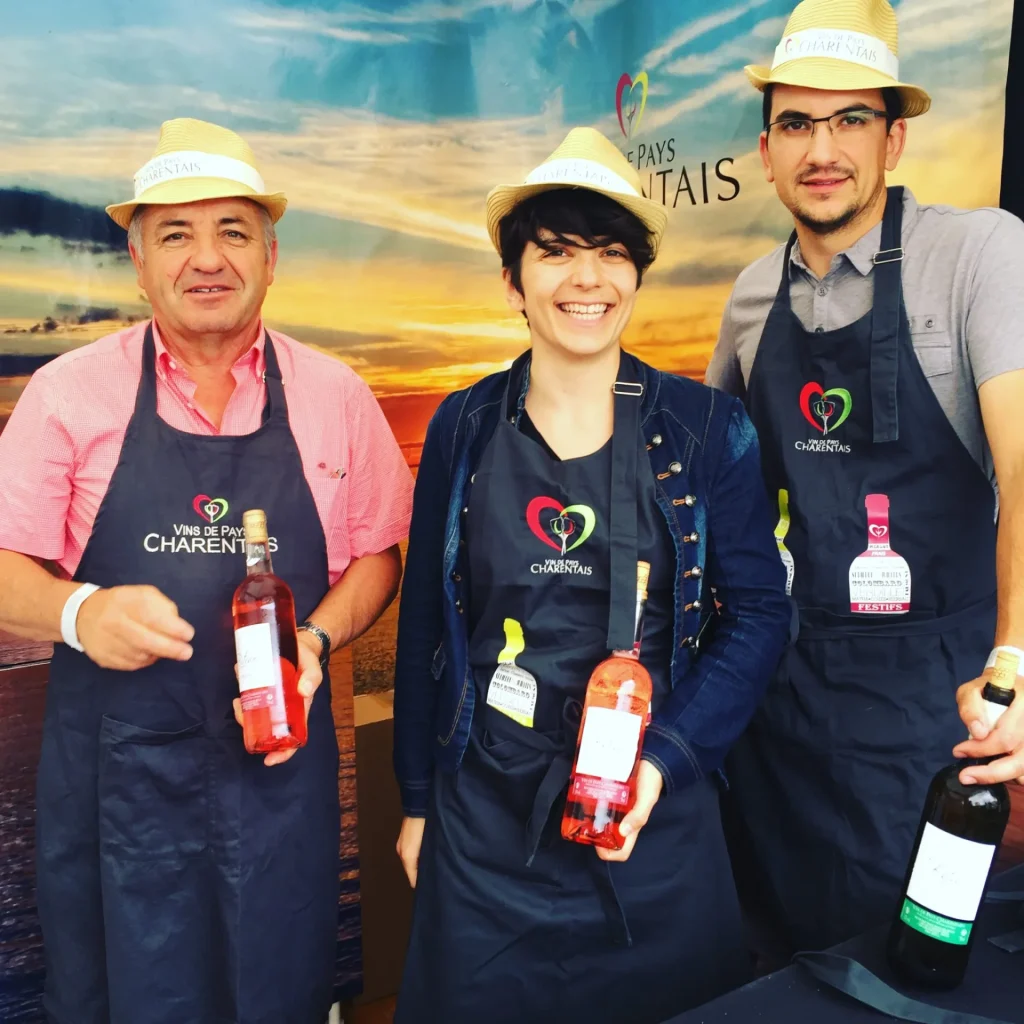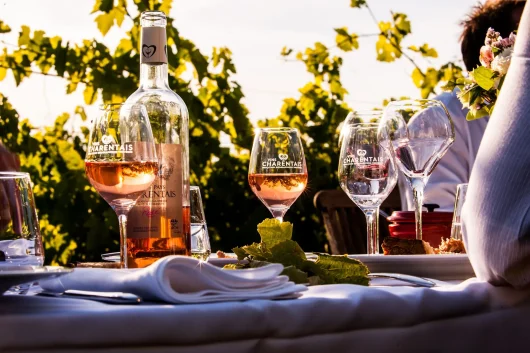In both of the Charente départements, from the Atlantic to the east of Angoulême, the mild climate with oceanic influences is unique and especially suited to livestock, cereals and the vine. The fertile soils, their typicity allied to the diversity of grape varieties is ideal for growing grapes.
From one generation to the next, the IGP Charentais winemakers have drawn the best from this terroir to produce wines with a remarkable taste, that are second to none.
They take time to do things well
The îles de Ré and Oléron, the undulating valleys of the Charente or the cliffs of the Gironde estuary … Charentais vineyards cover a rich and varied area. The temperate oceanic climate and the summer sun blend marvellously with the mosaic of soils to produce fine and elegant wines endowed with rich aromas. It’s not surprising that the Charentais vineyards have existed for centuries. The first vines were planted in the Roman era and estates grew significantly in the Middle Ages thanks to Eleanor of Aquitaine.
It was in 2009 that Charentais wines received their IGP label (protected geographical status) as recognition of the amazing work of our winemakers in the modern era
The territory
- Around Saint-Sornin
These vineyards are situated on the foothills of the Arbre massif and are the highest in the Charentes. Most of the fields are on slopes. The clay-limestone soils produce reds with spicy, fruity notes and with a good balance in the mouth. - From Angoulême to Matha
Soil called “fissured Jurassic mother-rock” produces round reds with notes of red fruit. The whites produce thiolate notes and are fresh and balanced in the mouth. - Cognac – Barbezieux – Mirambeau
These are wines from the soils of Champagne (clay-loam-limestone). The reds are fruity with a supple, tannic structure. The whites are complex, with citrus aromas. They reveal as round and balanced in the mouth. - From Pons to Royan
This sector with its acidic loam-sandy soils produces discreet reds, light and easy to drink. The rosés are round and fruity in the mouth. The whites are discreet and fresh with notes of box, blackcurrant and buds. - Île d’Oléron
Vineyards here, with loam-sandy soils, are under oceanic influence. The reds have a discreet nose and reveal pleasant aromas of fresh red fruit. In the mouth they are supple and nervous. The whites have a subtle white with aromas of yellow fruit and a fine vivacity in the mouth. - Île de Ré
The oceanic influence is similar to that of Oléron. The soils of Groie are clay-limestone, quite rich in organic matter and this gives fruity reds and rosés. The whites are fine and fruity with an agreeable freshness in the mouth.
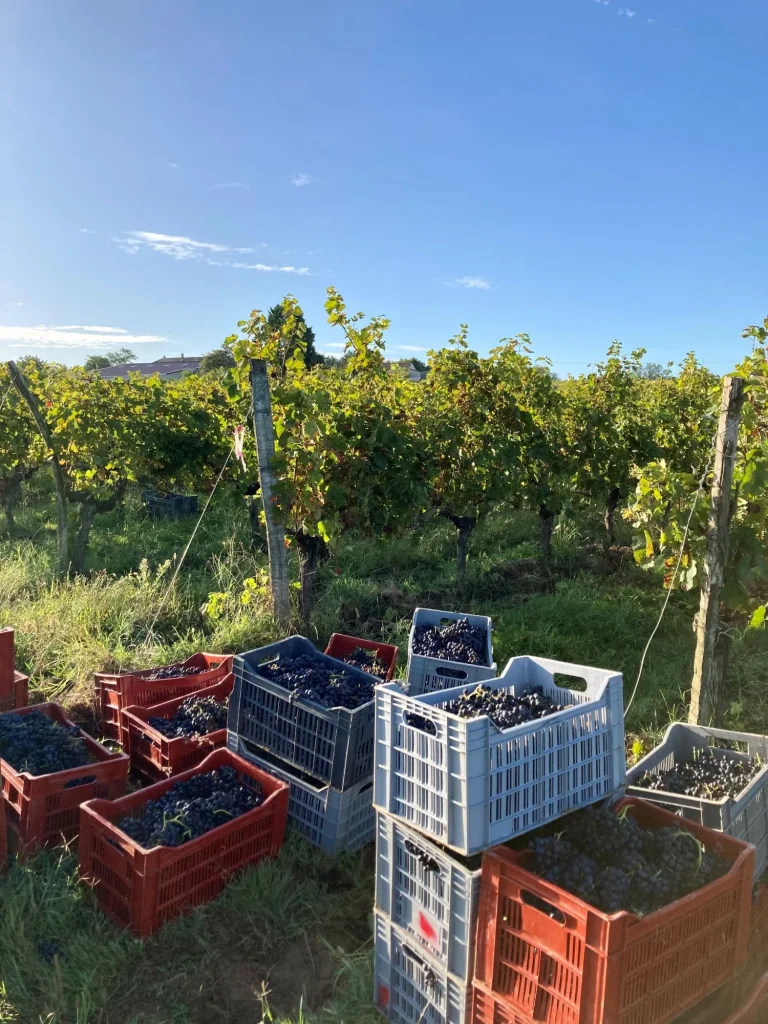
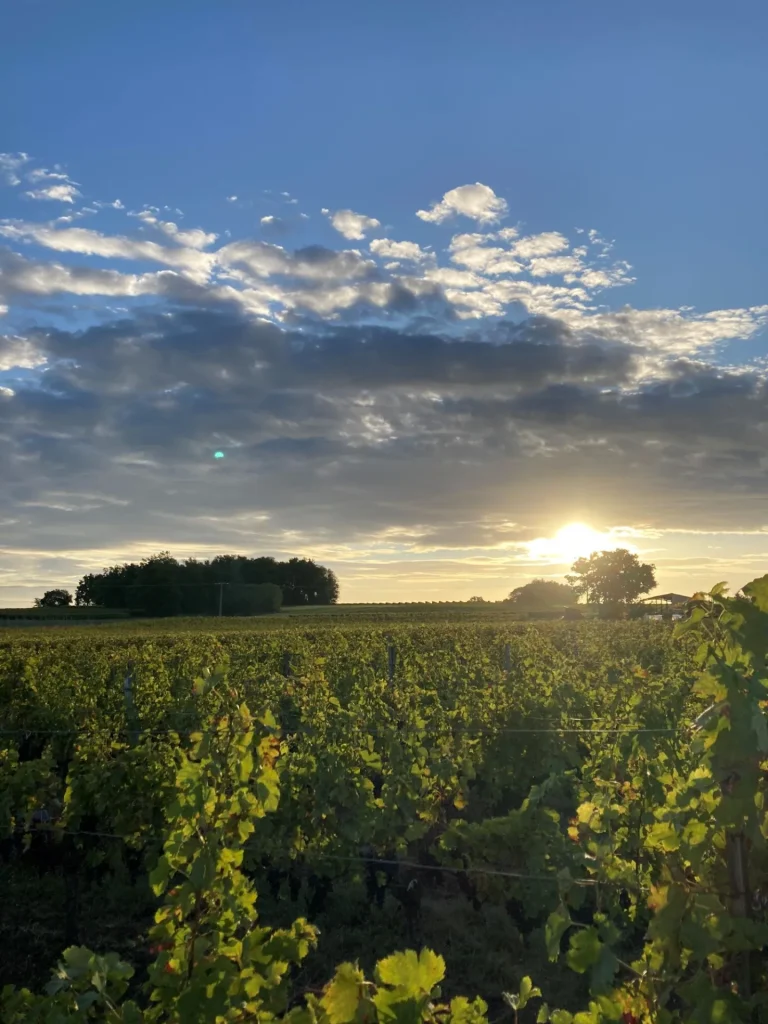
A wide range of grape varieties
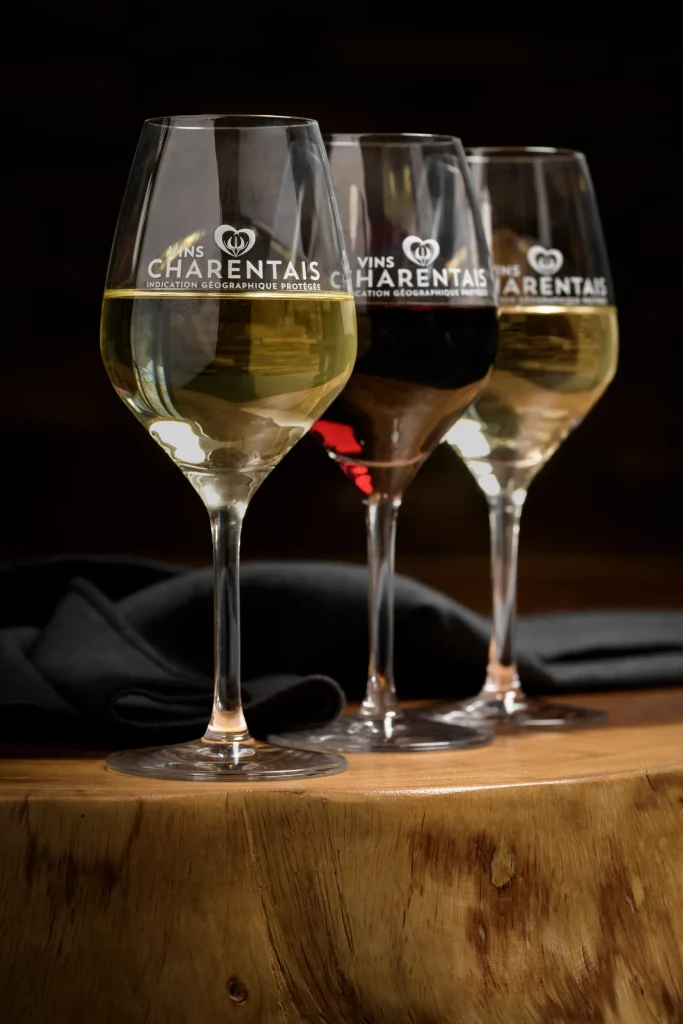
Altogether, IGP Charentais wines account for 40 varieties of grapes, from the iconic Merlot, Cabernet, Sauvignon and Chardonnay to Pinot noir, Gamay, Syrah, Chauché and Chenin. It’s this wide range of nuances that gives the wines their diversity. There’s one for everyone. Supple, round and elegant reds with pleasant notes of ripe red fruit and spices. Well balanced rosés that are delicate, fresh and fruity with citrus notes. Dry whites, with light and subtle aromas. Drinking IGP Charentais wines is being assured that with each bottle a winemaker is expressing his personality and temperament.
Enthusiastic winemakers…
Today, IGP Charentais wines cover some 600 producers.
Each one has his personality and all respect a high quality production, following the IGP specifications that impose a limited yield and a delineated zone of production.
Thus the grapes used for IGP Charentais wines come uniquely from the Charente and Charente-Maritime. The producers are also environmental stakeholders. IGP Charentais winemakers have been involved since 2018 in an environmental approach by piloting a System of Environmental Management.
Some figures
600 producers, 90 individual cellars, 3 cooperatives and 10 vintners.
1,500ha of vines over the two départements of Charente and Charente-Maritime.
60,000hl of average production per annum.
In 2021, 36% of the Charentais wines were rosé, 28% red and 36% white, very roughly a third for each colour.
40 grape varieties.
90% of IGP Charentais wines are sold in the region – at the vineyard, restaurants or in supermarkets.
75% of the sales occur during the summer season.
